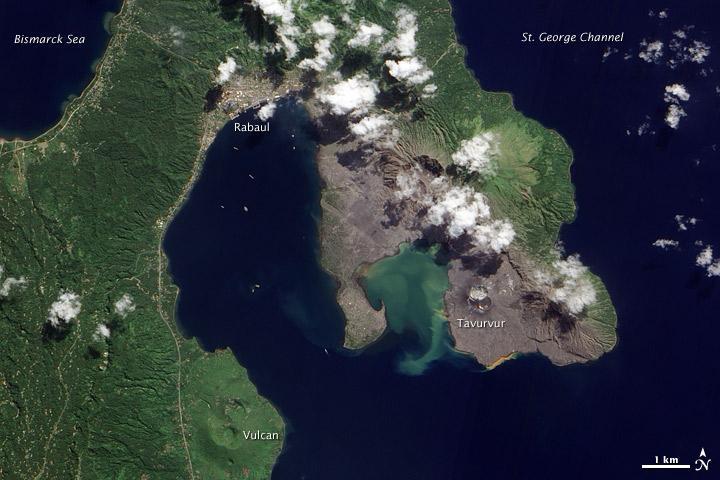Rabaul Caldera #

Spanning roughly 8 by 14 km (5 by 9 mi), the caldera is flooded by Blanche Bay. The largely submerged caldera long formed a natural harbor for what had been New Britains largest city, but a major eruption forced the evacuation of Rabaul City in 1994. Although the city ceased to bustle with activity, at least one volcanic cone remained active for years afterward.
The landscape in this satellite image appears as a mixture of vegetated and bare ground. Vegetation almost completely coats the western side of Rabaul Caldera. Volcanic cones line the northeastern margin of the caldera, and around these cones, the land is mostly rocky and barren. Tavurvur, near the southern end of the exposed caldera rim, was one of the volcanoes to erupt explosively in 1994.
The other was Vulcan, on the western side of the caldera. While vegetation has revived on the slopes of Vulcan, rocks predominate at Tavurvur, evidence of more recent eruptive activity. Remnants of settlements linger along the calderas northwestern margin and on a promontory near the calderas center.
Prior to the explosive eruption in 1994, the city of Rabaul had been the provincial capital of East New Britain. After the eruption, the capital was moved to the coastal city of Kokopo, some 20 km (12 mi) to the southeast.